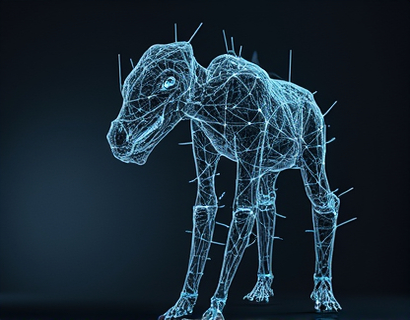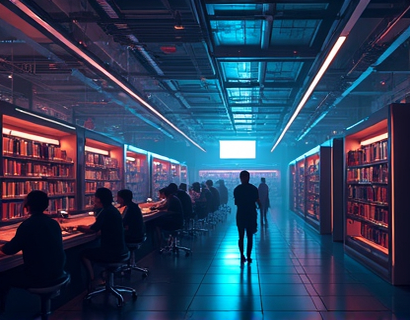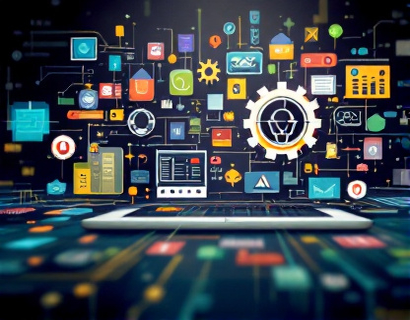Exploring the Future: An AI-Driven Resource on Nanobots for All Ages
The realm of nanotechnology, particularly the application of nanobots, stands at the forefront of scientific innovation, promising transformative impacts across various sectors including medicine, environmental science, and manufacturing. To cater to the diverse learning needs of individuals from all age groups, an AI-driven platform has been developed, dedicated to providing specialized knowledge about nanobots. This platform not only serves educational institutions and students but also offers a child-friendly version, ensuring that the future of learning is accessible, safe, and engaging for everyone.
Understanding Nanobots: A Comprehensive Overview
Nanobots, or nanorobots, are microscopic machines designed to perform specific tasks at the nanoscale, which is one billionth of a meter. These tiny devices, often measured in nanometers, are engineered to interact with matter at the molecular level, enabling precise manipulation and interaction with biological and non-biological systems. The potential applications of nanobots are vast and varied, ranging from targeted drug delivery in medical treatments to environmental cleanup and advanced manufacturing processes.
Medical Applications of Nanobots
In the medical field, nanobots hold the promise of revolutionizing healthcare by enabling more precise and less invasive treatments. One of the most promising areas is targeted drug delivery, where nanobots can be programmed to deliver medications directly to diseased cells, minimizing side effects and improving treatment efficacy. For instance, in cancer treatment, nanobots could be designed to identify and destroy cancer cells while leaving healthy cells unharmed. Additionally, nanobots could play a crucial role in early disease detection by monitoring biological markers at the cellular level.
Environmental Applications of Nanobots
Beyond healthcare, nanobots are also poised to make significant contributions to environmental conservation and remediation. These tiny machines can be deployed to clean up pollutants in water and soil, breaking down toxic substances into harmless components. For example, nanobots could be used to remove heavy metals from contaminated water sources or to degrade plastic waste in oceans. Their ability to operate at the nanoscale allows for highly efficient and targeted environmental interventions, potentially addressing some of the most pressing ecological challenges we face today.
Manufacturing and Material Science
In the realm of manufacturing, nanobots offer the potential to create materials with unprecedented properties and precision. By assembling materials at the molecular level, nanobots can produce goods with enhanced strength, durability, and functionality. This could lead to the development of new materials for construction, electronics, and other industries, driving innovation and efficiency. Moreover, nanobots could revolutionize the production process itself, reducing waste and energy consumption, and enabling more sustainable manufacturing practices.
The Role of AI in Nanobot Education
To demystify the complex world of nanobots and make it accessible to a broad audience, an AI-driven chat platform has been developed. This platform leverages advanced natural language processing and machine learning algorithms to provide accurate, up-to-date, and engaging information on nanobots. The AI chat interface is designed to interact with users of all ages, offering tailored content that caters to different levels of understanding and interest.
Verified Content for Trust and Accuracy
One of the key features of this platform is its commitment to content verification. All information provided is rigorously checked for accuracy and relevance, ensuring that users receive reliable and trustworthy data. This is particularly important in a field as complex and rapidly evolving as nanotechnology, where misinformation can lead to misunderstandings and misconceptions. By partnering with leading researchers and institutions, the platform ensures that the content is not only current but also authoritative.
Child-Friendly Learning Experience
Recognizing the importance of early education in shaping future scientists and innovators, the platform includes a specialized child-friendly version. This version simplifies complex concepts into engaging and easy-to-understand content, using visuals, interactive elements, and age-appropriate language. Children can explore the basics of nanobots, learn about their potential applications, and discover the exciting world of nanotechnology in a safe and educational environment. Parental controls and monitoring features are also in place to ensure a secure and supervised learning experience.
Interactive Learning with AI Chat Interface
The AI chat interface serves as a dynamic tool for users to engage with the platform and gain deeper insights into nanobots. Users can ask questions, request explanations, and explore topics in real-time, receiving detailed and context-specific responses. The chat interface is designed to be intuitive and user-friendly, making it accessible to both beginners and advanced learners. For educational institutions, teachers can integrate the chat interface into their curricula, using it as a supplementary resource to enhance classroom learning.
Personalized Learning Paths
One of the strengths of the AI chat platform is its ability to offer personalized learning experiences. Based on user interactions and preferences, the AI can recommend tailored content paths, ensuring that each user receives information that aligns with their interests and knowledge level. This personalized approach not only keeps users engaged but also fosters a deeper understanding of the subject matter. Whether a student is exploring nanobots for a school project or an adult is curious about the latest developments in the field, the platform adapts to meet their unique learning needs.
Community and Collaboration
The platform also fosters a community of learners and enthusiasts, providing a space for users to connect, share ideas, and collaborate on projects. Forums and discussion boards allow users to ask questions, share insights, and engage in meaningful conversations with peers and experts. This community aspect encourages a collaborative learning environment, where knowledge is shared and collective understanding is enhanced. Students can join groups based on their interests, participate in virtual workshops, and even collaborate on research projects under the guidance of mentors.
Future Prospects and Innovations
As nanotechnology continues to advance, the potential applications of nanobots expand, opening up new frontiers in science and technology. The AI-driven platform remains at the forefront of this evolution, continuously updating its content to reflect the latest research and developments. Users can stay informed about emerging trends, breakthroughs, and innovations in the field, ensuring they are always up-to-date with the cutting edge of nanobot technology.
Educational Impact and Accessibility
The impact of this platform extends beyond individual learning, contributing to broader educational goals. By making specialized knowledge accessible to a wide audience, the platform helps bridge the gap between scientific research and public understanding. This democratization of knowledge empowers individuals from all backgrounds to engage with advanced topics, fostering a more informed and scientifically literate society. For educational institutions, the platform serves as a valuable resource, complementing traditional curricula and enhancing the educational experience.
Conclusion
In conclusion, the AI-driven platform dedicated to nanobots represents a significant step forward in making complex scientific topics accessible and engaging for all ages. By combining verified content, a child-friendly interface, and interactive learning tools, the platform ensures that users of all backgrounds can explore the fascinating world of nanobots with confidence and ease. As we continue to push the boundaries of what is possible at the nanoscale, this platform will play a crucial role in educating and inspiring the next generation of scientists, innovators, and thinkers.










































